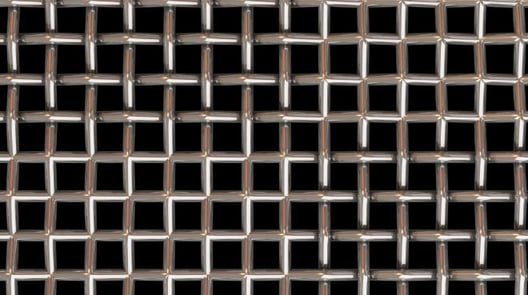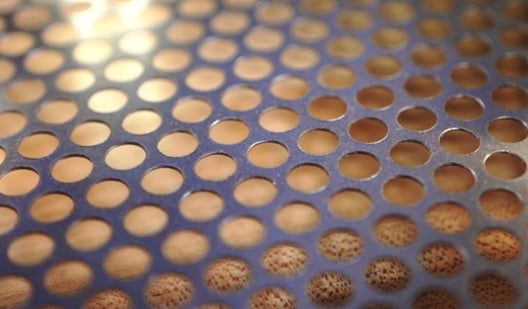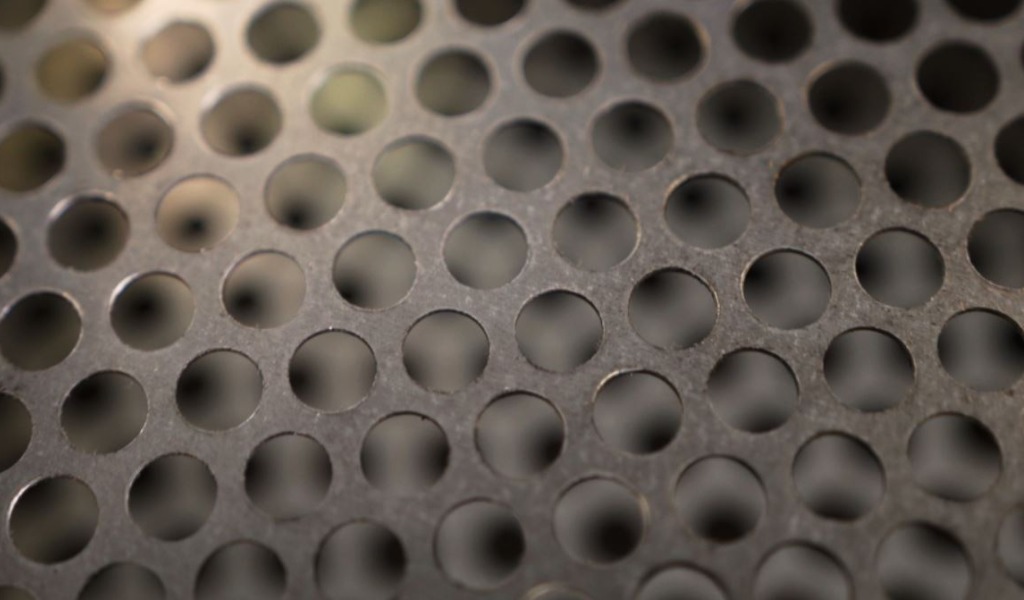Molded Pulp Fiber Media: Wire Mesh vs Perforated Plate
From cup holders to to-go boxes, molded pulp fiber comes in a variety of form factors. Despite the size or shape of any given molded pulp fiber packaging, the production process remains relatively universal.
A significant aspect of refining and perfecting your molded pulp fiber production line is handpicking materials that will afford your process the ability to produce quality products. This includes selecting a suitable screening media to line your molds, such as woven wire mesh and perforated plate.
W.S. Tyler has been weaving wire mesh solutions into countless industries for over 150 years and has come to understand how detrimental selecting the right screen media is to producing quality molded pulp fiber packaging.
With that, this article was written to highlight the key differences between woven wire mesh and perforated plate, providing insight into what may be right for you. It will cover:
- The definition of woven wire mesh
- The benefits of using woven wire mesh molds
- The definition of perforated plate
- The benefits of using perforated plate molds
- What screening media makes more sense for you
What Is Woven Wire Mesh?

Woven wire mesh is defined as a network of metallic wires that are interwoven in the weft (horizontal) and warp (vertical) direction. A heavily-monitored weaving process is used to form weave patterns that feature calculated pore openings that are both precise and rigid.
How Does Woven Wire Mesh Benefit Molded Pulp Fiber Packaging?
When molding pulp and fiber, a key benefit of using woven wire mesh is its open profile. As it is constructed from wires with a precise wire diameter, the amount of surface closed off from the surface of the wire is minimized.
This results in improved water drainage which ultimately translates to minimal energy and time needed during the drying process.
Additionally, virtually every parameter, such as wire diameter and mesh opening, can be customized to very fine specifications. In fact, wire mesh pore openings can be as small as 400 mesh (400 openings per linear inch).
This proves beneficial to those who look to produce visually appealing finishes, as the finer the mesh, the smoother the finish of the molded pulp fiber.
For a more comprehensive overview of the role woven wire mesh plays in the molded pulp and fiber industry, read the article below:
What Is Perforated Plate?

Perforated plate is defined as a piece of sheet metal that undergoes various fabrication methods, such as perforated press, laser cutting, plasma cutting, and water jet, to create openings of uniform size. Much like woven wire mesh, the dimensions and parameters of these openings are pre-calculated, allowing it to deliver adequate screening performance.
How Does Perforated Plate Benefit Molded Pulp Fiber Packaging?
When compared to woven wire mesh, perforated plate stands out as it is known for its durability. As a result, less time and money is spent on replacing broken molds.
Another key benefit of using perforated plate is its superior heat conductivity. When molding pulp and fiber, the molds must be heated to help the individual fibers bond to one another while also beginning the drying process.
Because perforated plate has great heat conductivity, it helps ensure consistent molds of the expected quality.
What Material Should I Use To Fabricate My Pulp and Fiber Molds?
As we see green initiatives being implemented across the globe, the demand for molded pulp fiber packaging has never been higher. As a result, molds of all shapes and sizes are being used to meet this demand.
Read the article below for more information regarding the pro and cons of fabricating your molds in-house:
As the screening media must be formed to fit over the molds, it's imperative that you work with a material with enough give.
While woven wire mesh is typically constructed from stainless steel to provide substantial rigidity, the material is known for its flexibility. This means that wire mesh can easily be formed to accommodate even the most detailed molds.
Perforated plate, on the other hand, is often too rigid to be formed into more complex molds.
Now, keeping up with demand also means certain organizations will have to dramatically ramp up production. As a result, you will begin seeing faults from wear and tear developing more frequently.
As stated above, because perforated plate is constructed from sheet metal, each perforated plate mold delivers the durability needed to withstand the molded pulp fiber process. Much longer than woven wire mesh, even when the perforated plate is outfitted with smaller holes.
But let's say the final surface finish of your molded pulp fiber is the top priority for your organization. As stated above, the smaller the openings of the screen media, the more visually appealing the finish.
With that said, it is essential to remember that woven wire mesh can be woven to much finer specifications than perforated plate.
So, in short, if you are looking to deliver molded pulp fiber packaging with either a complex shape, smooth finish, or both, odds are woven wire mesh will best serve your needs. But if you manage a high-capacity operation and you prioritize the durability of your molds, perforated plate may be a better fit.
Your Pulp and Fiber Molds Are Only as Good as the Alloy Used To Construct Them
Woven wire mesh and perforated plate are both materials used for molded pulp fiber molds and are widely known for their durability.
Woven wire mesh is particularly useful when the molds must be formed to complex profiles or the screen must be fabricated to finer speciation. On the other hand, perforated plate is mainly popular in high-capacity operations that demand the most durability possible.
Now, selecting the screen media is just the beginning. If you want to achieve peak performance and produce quality products, you must take the steps needed to pinpoint the alloy your molded pulp fiber molds should be fabricated from.
With over 150 years of woven wire mesh experience, W.S. Tyler is here to help you develop wire mesh components that work so you can improve your process and increase revenue.
To learn more about the alloys you should be used to fabricate your molded pulp fiber molds, read the following article:
About Ronnie Brown
Ronnie is the Content Writer for W.S. Tyler and has four years of experience as a professional writer. He strives to expand his knowledge on all things particle analysis and woven wire mesh to leverage his exceptional writing and graphic design skills, creating a one-of-a-kind experience for customers.




